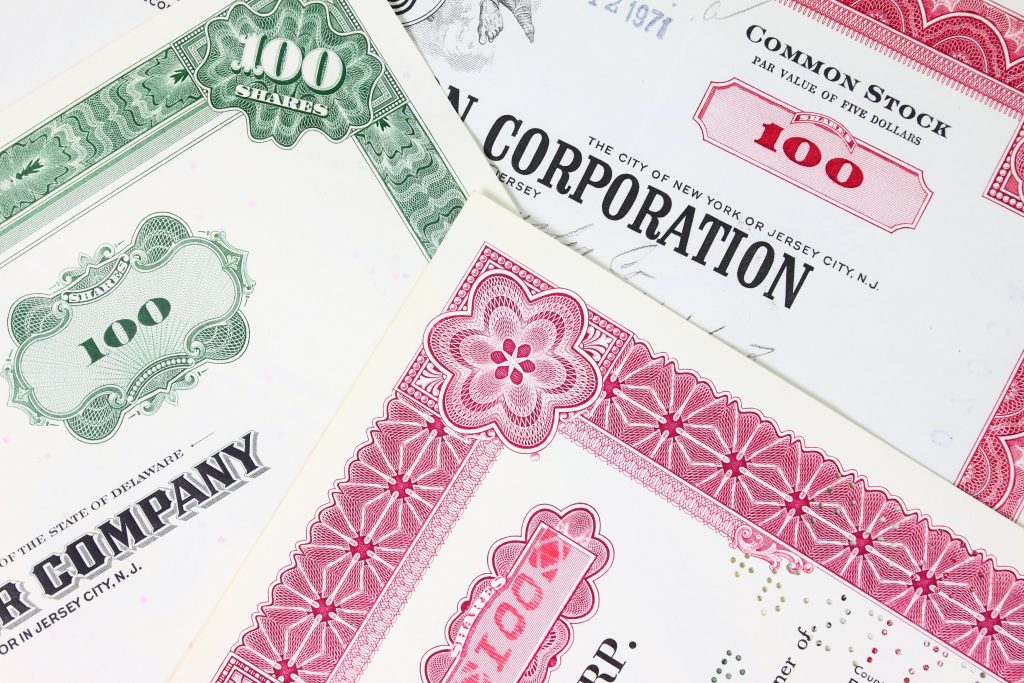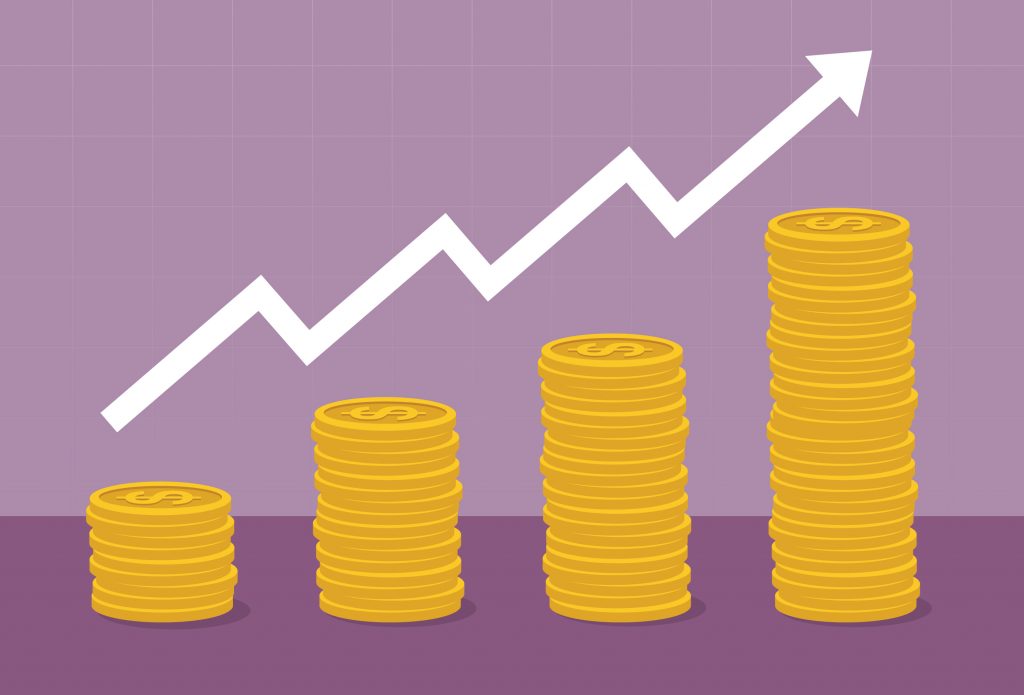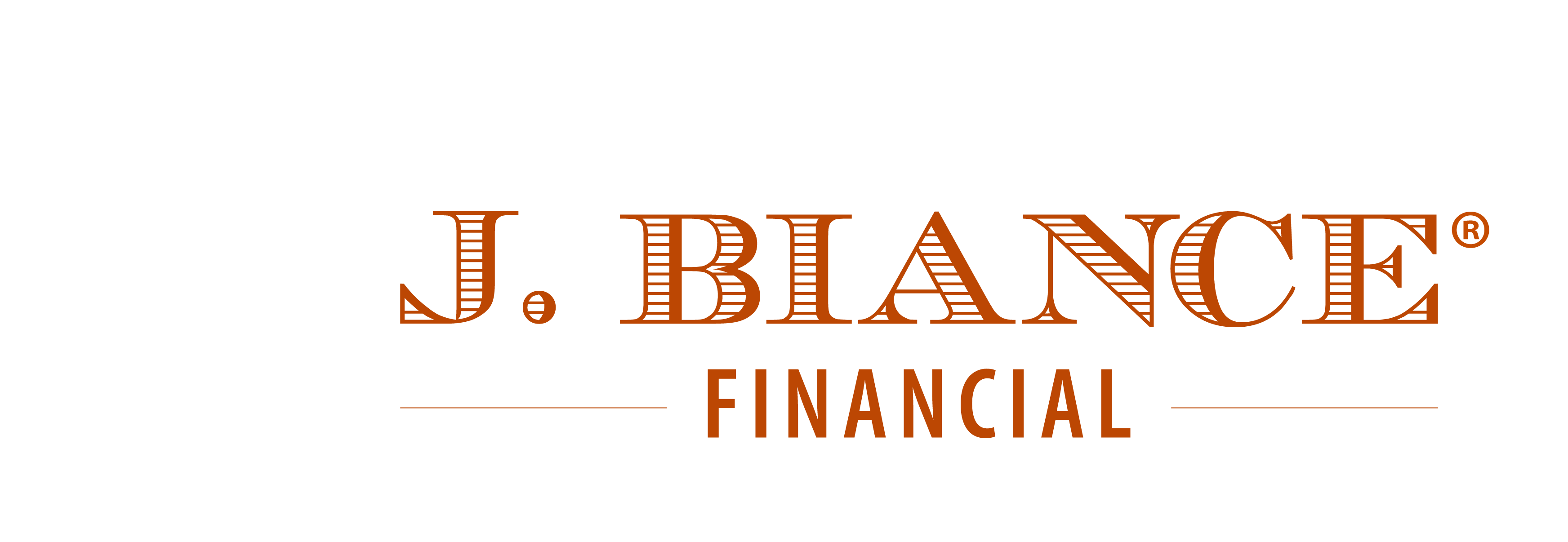In the previous post we covered highlights of the history of money in England during the 16th and 17th century. Today we will cover the birth of the New York Stock Exchange(NYSE).
The two main turn of events that contributed to the birth of the NYSE were the standardization of gold coins (the gold standard) and goldsmiths and merchants becoming the first private depositors (local banks). Up until that point, the government was the only lender in town. Soon enough, these goldsmiths, merchants and “bankers” began trading something other than money: shares of stock.
A “stock certificate” as they became known, was literally proof of ownership of a small percentage of the company. If the company generated profits, all owners, however small their ownership, made a profit. To many of that time period, it made sense to own a piece of a company.

In the 18th and 19th century, there was only one company whose stock you would be interested in owning: the East India Company. They had a monopoly on trade of commodities such as tea, salt, cotton, silk and opium. The East India Company was so large it was given the moniker “an empire within an empire” portraying its prominence within the already massive British Empire.
It is said that at one time the East India Company had a private army twice the size of the British military. It made sense to own a shares of stock in the East India Company due to the fact that they profited from products people used daily. Similar to Amazon…if Amazon had a military.

The East India Company originally sold stock certificates to raise money. They were sailing for months to years at a time, halfway around the world. It took money to buy the supplies and secure manpower. To purchase a share of stock was to help fund their voyage across the ocean. Upon their return if you owned a share of stock, you could share in the profits, or as we currently refer to it, receive a dividend. This was the inception of the Joint Stock Company as we understand it today.
When the Stock Market first began, the only two assets to buy and sell were Equities and Debt Instruments. Equities are stocks, in their most basic form. You own a share (have equity) of the company. That company may pay you a dividend (profit) perhaps quarterly, annually, etc. . Then, if at a later time you wish to sell your share of ownership, you can do so for fair market price. If you sell it for more than what you paid, that’s a capital gain.

Debt instruments are bonds in their most simple form. If you buy a bond you are loaning that company (or government entity) money. The company will pay you interest for the use of your money in the form of coupon payments(most often twice a year). Once the bond (loan) comes due, the company returns to you the face value (principal). In laymen’s terms, you are the debtholder and they pay you interest.
In the early days of the stock market, the most commonly traded asset was government securities such as war bonds from the Revolutionary War. It is not cheap to fight in a war, the government needed money to finance food, fuel and bullets. Even back then our government enlisted Hollywood’s help for political gain. When sales were weak for the bonds needed to finance World War I, politicians convinced megastars Douglas Fairbanks and Charlie Chaplin to help them sell “Liberty Loans”.
A similar example can be seen when the comicbook hero Captain America parades around the country selling war bonds for World War II. Bonds were the first major player however stocks soon took over as the main attraction. Almost every other financial product that you can invest in today, is an offspring of the two basic concepts of stocks and bonds.

The stock market is simply a place to buy and sell shares of stocks and bonds(and other securities) from various companies and governments. Early investors in America, were focused on commodities such as wheat, petroleum and of course, gold.
In addition, businesses were created to build railroads and turnpikes to help facilitate the the expansion of life across America. We developed the western part of the United States due to capitalism. The shares of stock of these companies were traded alongside the government bonds. Where these transactions took place came to be known as the New York Stock Exchange.
The NYSE traces its roots back to 24 men who met underneath a Buttonwood Tree in 1792. That meeting took place a mere 6 weeks after the passage of the The Great Coinage Act, the piece of legislation which was the foundation of our nation’s currency. Those 24 men held an extremely pivotal meeting that day, they created a place to exchange assets. This marketplace fueled the Industrial Revolution. It would become the center of global economic trade.
In Part III, our final installment, we will conclude our history of the stock market and discuss what role it plays in our everyday lives.
Investment advisory services offered only by duly registered individuals through AE Wealth Management, LLC (AEWM). AEWM and J Biance Financial are not affiliated companies. Investing involves risk, including possible loss of principal. No investment strategy can ensure a profit or guarantee against losses in a declining market. Insurance and annuity guarantees are backed by the financial strength and claims-paying ability of the issuing company. Our firm does not provide and no statement contained in the guide shall constitute tax advice. All individuals are encouraged to seek the guidance of a qualified tax professional regarding their personal situation.571294

